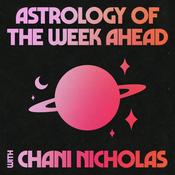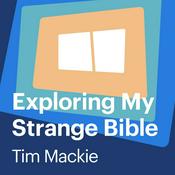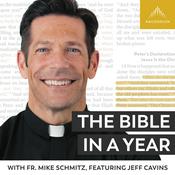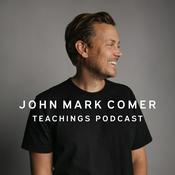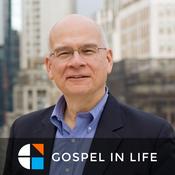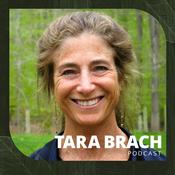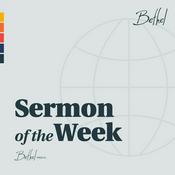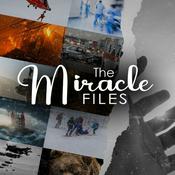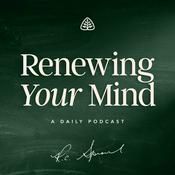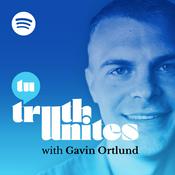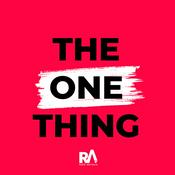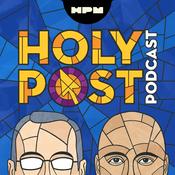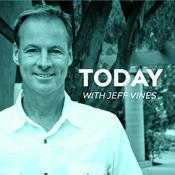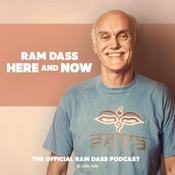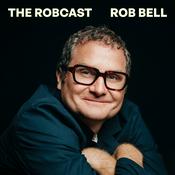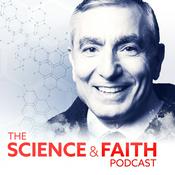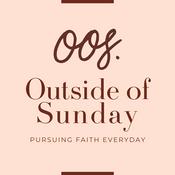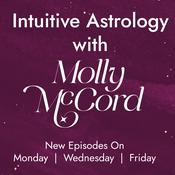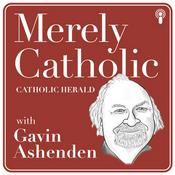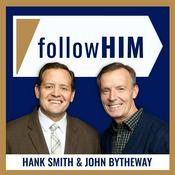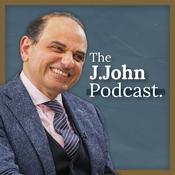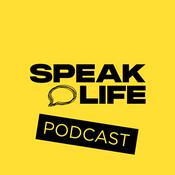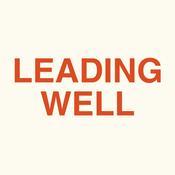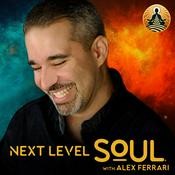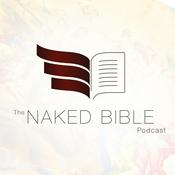Earth Dreams: Zen Buddhism and the Soul of the World
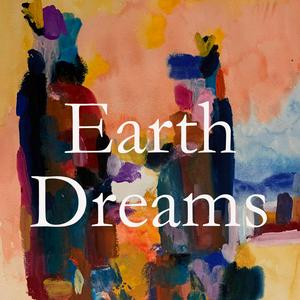
84 episodes

Telling the Story of Awakening
13/12/2025 | 45 mins.
Tis’ the season for story-telling. I don’t know about you, but there are certain stories I can hear over and over again. These stories often have mythic and archetypal elements, that seem to resonate with the poetics of the soul.In the Zen Buddhist tradition the first week of December is the week we commemorate/remember/celebrate the Buddha’s awakening. We do this with our bodies. Sitting retreat with the orientation that we too can realize our true nature. That we too can awaken.We do this with our hearts and minds. Reading, listening, contemplating the elements of the Buddha’s story, which is mythic in nature. And as we hear the story of the Buddha we are reminded of our own path—that awakening is possible for us and that it is unfolding right here, in this precious life.Below I will share a brief sketch of the Buddha’s story. Please listen to the talk if you want to hear a more fleshed out version. Of course, like all stories, this one changes every time it is told. There actually isn’t any recorded biography of the Buddha in the Pali Cannon, we have some references he makes to his journey and scholars/practitioners have worked to put them together in a cohesive narrative. In this telling, I am choosing the elements that have resonated with me on my own path. I am appreciating how the Buddha’s story has elements of the hero’s journey as well as important dharma teachings.Maha Maya’s DreamThe story begins with a dream. Maha Maya, whose name means illusion, dreams one night that she is taken to the mountains by four spirit beings. She is then bathed, anointed with oils, perfumes and flowers. A white elephant appears, circles her three times and pierces her side with his six tusks. She awakens from the dream knowing that she is pregnant with a son.When she tells her husband, King Suddhodana, about the dream he invites the town seer to interpret it. The seer confirms that Maha Maya is indeed pregnant with a son and that he will be either a great king or the founder of a new religion.Upon hearing this prophesy, King Suddhodana decides to make his son’s life so comfortable that he will never want to leave the palace.So Siddaratha Gotma (the Buddha) is born, and lives a sheltered life. He describes it in one sutta, saying:I, lived in refinement, utmost refinement, total refinement. My father even had lotus ponds made in our palace: one where red-lotuses bloomed, one where white lotuses bloomed, one where blue lotuses bloomed, all for my sake… A white sunshade was held over me day & night to protect me from cold, heat, dust, dirt, & dew.Disillusionment with a Protected Life/The Four SightsEventually Siddhartha becomes a young man and one night he wakes before dawn after a party at the palace. He looks around and feels a bit disgusted by what he sees, bodies strewn around, sleeping, smelling of alcohol and sex—from having indulged in all forms of pleasure the night before. His heart questions what he is doing, what kind of life he is living.After this experience, he feels like he needs to see what is beyond the palace walls. So he enlists his charioteer to take him into the town. While they are there Siddhartha sees what has become known as the four sights. He sees someone who is ill, sick crying out in pain. He sees some who is old, hunched over, skin full of wrinkles and he sees a corpse. With each sight, he feels disgust and curiosity. A knowing arises in him that this will also happen to him. He too will age, become ill and die. He becomes disillusioned by his current state of health, youth and life. For what is the point in indulging in the pleasures of health, youth and life, if you are ignoring the truths of sickness, old age and death. Something about this experience really starts to way heavy in his heart, and fill him with great doubt.Then he sees the fourth sight, a renunciate sitting serenely under a tree. He is touched by the look of contentment on this person’s face. Something in him knows that there is a path to realizing a contentment that is beyond sensual pleasures, that one could know freedom, love and joy that wasn’t dependent on conditions.Leaving His Father’s HouseHe knows he has to leave his father’s house. It isn’t an easy decision. One I imagine he tries to ignore, but his doubt and curiosity grow stronger and stronger. In one telling of the story, his wife Yasodhara has eight dreams about the path he needs to take, and so encourages him to go. Before he leaves, they make love and conceive a son.Then Siddhartha shaves his head, puts on the ochre robes of a renunciant and begins the nomadic life of a home-leaver. He meets two teachers, studies with them for years and eventually masters their teachings. But finds that their dharma leads him into deep states of concentration, but does not bring him to liberation. So he eventually leaves them, even though they urge him to teach with them. He then meets five wandering ascetics and starts practicing austerities. He tries to suppress thought, stop his breath, and survive on one spoonful of food a day—none of these techniques work well for him. He speaks of undergoing great physical and emotional pain but being no closer to liberation. In a state of desperation and hunger, a memory arises from childhood, which he describes:“I thought: ‘I recall once, when my father the Sakyan was working, and I was sitting in the cool shade of a rose-apple tree, then — quite withdrawn from sensuality, withdrawn from unskillful mental qualities — I entered & remained in the first jhana: rapture & pleasure born from withdrawal, accompanied by directed thought & evaluation. Could that be the path to Awakening?’ Then, following on that memory, came the realization: ‘That is the path to Awakening.’ I thought: ‘So why am I afraid of that pleasure that has nothing to do with sensuality, nothing to do with unskillful mental qualities?’ I thought: ‘I am no longer afraid of that pleasure that has nothing to do with sensuality, nothing to do with unskillful mental qualities, but it is not easy to achieve that pleasure with a body so extremely emaciated. Suppose I were to take some solid food: some rice & porridge.’ So I took some solid food: some rice & porridge.So he takes some food to nourish his body and with a new clarity, a deeper connection to purpose and himself, he resolves to sit under the bodhi tree until he awakens.Mara’s TemptationsThough he is clear in his resolve and clear about the path forward, he still encounters great difficulty. Mara (the tempter or doubting voice in Siddhartha) appears during his meditations tempting him, creating feelings of restlessness in body and in mind, showing scenes from the pleasures he used to have at the palace, conjuring fear/doubt and telling him to give up.Siddhartha eventually sees Mara for what they are, a voice of doubt, and Mara slinks away. The Buddha awakens, upon seeing the morning star rising in the east, after a week of meditation. On the final night he has insights into impermanence, cause and effect and finally the nature of suffering/bondage and the path that leads to the cessation of suffering/bondage.He says in one story, “I, together with all beings and the great earth, awaken.”In another he says:House-builder, you’re seen! You will not build a house again.All your rafters broken, the ridge pole destroyed, gone to the Unformed, the mindhas come to the end of craving.The earth rises up and confirms the Buddha’s awakening. After Mara appears and throws more shade on the Buddha.The Buddha questions whether or not he can teach. And remains sitting under the Bodhi tree for another week. During this time a great storm rolls through, and Mucilinda (the snake king), protects the Buddha from the storm with his seven heads.It’s also said that on the night that the Buddha awakened, his wife, Yasodhara gave birth to their son, Rahula. She had been carrying their son for six years, and underwent he own spiritual journey, never leaving home.Does the story really end here? Not really, practice-awakening continues, on and on and on. There are many ways to appreciate a story like this, I have been enjoying looking at the story from the lens of the hero’s journey. So many of the elements of the Buddha’s story are elements that are a part of our own life and the path of practice-awakening. I the new year, I will offer some teachings and reflections on elements of the hero’s journey and the spiritual path. But for now, I would love to hear if any elements from the Buddha’s story touched you in anyway.* Have you had important dreams that gave you confidence about the next step on your path, even if it didn’t make rational sense?* What is your own experience of being disillusioned? Or needing to challenge a teaching, belief or lifestyle that you were raised in? How has doubt been part of your path?* Can you relate to having an experience as a child that feels connected to your path/practice now? Sometimes it feels like we are relearning something we knew naturally as children, does this feel true to you?* The Buddha was supported and protected by the Earth and the snake king—what protectors, supporters or allies have you had in your own life (people, animals, plants, places, dream figures)?* I appreciate Yasodhara’s story as one that happens in the dark space of unknowing, unfolding in her home as she cares for the child she is carrying. In what ways has your own path/practice had elements of darkness, hiddenness, not-knowing and/or nurturing something precious that perhaps you don’t yet know what it is?* Are there any other elements of the Buddha’s story that resonate or that you feel curious about? Weekly Online Meditation EventMonday Night Dharma — 6P PT / 9P ET Join weekly for drop-in meditation and dharma talk. Monday Dec 15th we will do some seasonal reflection as Ango ends and we approach the winter solstice.Feel free to join anytime. Event lasts about 1.5 hours. ZOOM LINKIn-Person in OregonUniverse Somatic: The Bright Thread in the Dark — January 22nd - 25thUniverse Somatic is a practice that integrates group meditation, movement and energy work with a spirit of experimentation and playfulness. We explore the union of spaciousness and embodied energies in a contemplative practice that is embodied and expressive.The theme for this Universe Somatic is The Bright Thread In the Dark. We will play in knowing and not-knowing, hope and despair, yin and yang, creation and destruction, dancing in deep relationship with these polarities while also listening for the thread that doesn’t get stuck on either side.Light of the Ancestors Sesshin—May 11 - 17 at Great Vow Zen MonasteryIn-Person in Columbus, Ohio through Mud Lotus SanghaWeekly Meditations on Tuesday, Wednesday and ThursdayRetreats, Meditation instruction and other events can be found on our website.Save the Dates! 2026 Mud Lotus Sesshins at Saranam Retreat Center in West VirginiaMountains and Rivers Sesshin March 18 - 22Interdependence Sesshin June 29 - July 5I’m Amy Kisei. I am a Zen Buddhist Teacher, Spiritual Counselor, Astrologer and Artist. I offer 1:1 Spiritual Counseling sessions using IFS and Hakomi (somatic mindfulness). I also offer astrology readings. Check out my website to learn more. I currently live in Columbus, OH and am a supporting teacher for the Mud Lotus Sangha.Earth Dreams is a reader-supported publication. To receive new posts and support my work, consider becoming a free or paid subscriber. This is a public episode. If you'd like to discuss this with other subscribers or get access to bonus episodes, visit amykisei.substack.com/subscribe

The mysterious source
07/12/2025 | 28 mins.
I want to return to this profound poem we are studying for the autumn practice period—Affirming Faith in Mind.If mind does not discriminate, all things are as they are as one. To go to this mysterious source—frees us from all entanglements.When all is seen with equal mind, to our self-nature we return. This single mind goes right beyond all reasons and comparison.This poem is about Trust in Mind, Faith in our true nature, Trust in the Heart of WisdomDo we trust our heart-mind?Do you have faith in the nature of your own mind? Your own heart?This poem is a “pointing out” style teaching. Stanza by stanza, line by line—it’s pointing to the Mind beyond thought. It’s inviting us to recognize who we are beyond our strategies of defending, protecting, judging, identifying.We too can know ourselves as mystery.We too can know the source of all experience.There is encouragement and support to turn towards the apparent source of our suffering, and really look into its nature. To experience for ourselves the freedom, spaciousness, clarity and love of our nature. Right, here.Dahui in one of his letters addresses a student’s concern that he is dull, and his dullness is preventing him from realizing his true nature.Dahui responds:That which perceives dullness is certainly not dull itself…indeed you should use your very dullness in order to enter the Way. However, if you identify with dullness and regard yourself as incapable by nature of awakening, you will find yourself caught by the demon of dullness.As I see it, in our ordinary way of seeing things we tend to let the desire for awakening get ahead of us and thus turn it into an obstacle preventing our true understanding from manifesting. But this obstacle is neither outside ourselves nor separate from ourselves—it is none other than the Master perceiving itself as “dull.”For this reason everyday Ruiyan Shiyan would call to himself, “Master!” He would then answer himself, “Yes!” “Be wide awake!” he would say, and again answer himself, “Yes!” Then he would say, “Whatever the time, whatever the day, never be misled by others!” “Yes! Yes!” Try examining this in your own way. The one who asks, what is this? is none other than the one who perceives dullness. And the one who perceives dullness is none other than your own True Self.Whether it is dullness, distraction, anger, fear. Whatever we habitually identify with and appears to block our path. What happens when we turn our attention toward the one who is aware of this apparent block? The “master” or True Self is always at home.We are invited to recognize this always present awareness, for ourselves, in our own lives.Freedom and love. Always right here.We are entering the last weeks of this calendar year. Can we use this time to reconnect with our aspiration? To recognize the true self, and not be misled by others.And to also appreciate the season of practice we are in. There are times where we are actually developing our discernment, our discriminating mind. Some of us are learning to trust ourselves, to stand in our karma, to take responsibility for our lives.Part of Trust in Mind, is having the courage to take action, to follow the call when it arises. For some of us the call may take you to a monastery or into a period of inquiry and spiritual investigation. For others it may have more to do with how you are showing up in your lives, or it may be about healing, or responding to a relational challenge. I know some of you are sitting in the question and are listening for the next step. That’s part of this path too—I listened for 7 years before I had clarity, courage, conviction and life circumstances to move to the monastery. I am listening now for the next step on this path, as I continue to deepen my practice and develop new skills.Do not be deceived by others. I love this line. For many of us, it is a worthwhile practice to say this to ourselves, regularly. Who are these others? The thoughts in our own minds, the ones that are always comparing ourselves to someone else. What happens when we fully embrace this life? When we live our wisdom? When we honor our limitations, our karmic inheritance—and live the life we have?Tomorrow is Bodhi Day and I will be offering a telling of the Buddha’s awakening story. We will explore the hero’s journey in the Buddha’s story and see how elements of the Buddha’s path are part of our own journey’s. Join for the Monday Night dharma to hear this talk!I am also co-facilitating an exploration of the Astrology of the Winter Solstice with the Jung Association of Central Ohio this Saturday December 13th with Shawn Casey at the Burkhart Chapel.Weekly Online Meditation EventMonday Night Dharma — 6P PT / 9P ET Join weekly for drop-in meditation and dharma talk. Monday Dec 8th we will explore the Buddha’s awakening story!Feel free to join anytime. Event lasts about 1.5 hours. ZOOM LINKIn-Person in OregonUniverse Somatic: The Bright Thread in the Dark — January 22nd - 25thUniverse Somatic is a practice that integrates group meditation, movement and energy work with a spirit of experimentation and playfulness. We explore the union of spaciousness and embodied energies in a contemplative practice that is embodied and expressive.The theme for this Universe Somatic is The Bright Thread In the Dark. We will play in knowing and not-knowing, hope and despair, yin and yang, creation and destruction, dancing in deep relationship with these polarities while also listening for the thread that doesn’t get stuck on either side.Light of the Ancestors Sesshin—May 11 - 17 at Great Vow Zen MonasteryIn-Person in Columbus, Ohio through Mud Lotus SanghaWeekly Meditations on Tuesday, Wednesday and ThursdayRetreats, Meditation instruction and other events can be found on our website.Save the Dates! 2026 Mud Lotus Sesshins at Saranam Retreat Center in West VirginiaMountains and Rivers Sesshin March 18 - 22Interdependence Sesshin June 29 - July 5I’m Amy Kisei. I am a Zen Buddhist Teacher, Spiritual Counselor, Astrologer and Artist. I offer 1:1 Spiritual Counseling sessions using IFS and Hakomi (somatic mindfulness). I also offer astrology readings. Check out my website to learn more. I currently live in Columbus, OH and am a supporting teacher for the Mud Lotus Sangha. This is a public episode. If you'd like to discuss this with other subscribers or get access to bonus episodes, visit amykisei.substack.com/subscribe

When Obstacles Become the Path
22/11/2025 | 42 mins.
One stanza from the Trust in Heart poem says:Cut off all useless thoughts and words and there’s nowhere you cannot go.Returning to the root itself, you’ll find the meaning of all things.If you pursue appearances you overlook the primal source.Awakening is to go beyond both emptiness as well as form.I appreciate the clarity of these instructions. Here we find an invitation to practice with our thinking minds. I find that this instruction to “cut off” is more of an invitation to see through or into the thinking mind and recognize what thoughts really are. Especially thoughts that appear as hindrances. The repetitive inner critical thoughts, endless doubts, obsessive thinking about the future.What are thoughts made of? How long do they last?We are told in Buddhism to regard thought as another sense. What is this like? To notice the textural, auditorial, image-emotional experience of thinking.What happens when during a meditation period or in your daily life you turn attention to the thinking mind, to attend to the thought stream?When we see thoughts for what they are, they have less power over us. We don’t have to believe or even identify with everything we think—we also don’t need to get a in struggle with our thoughts.This teaching and practice empowers us to be more discerning. We use our thinking minds throughout the day—planning, reflecting, reasoning, contemplating, conversing.And it is possible to use the mind, without being used by the mind.This poem is inviting us to recognize the root of the thinking mind. The root of the thinking mind, is the root of all things. When we know experientially the true nature of the thinking mind which includes: doubt, inner critic, worry, anxiety, judgement, planning, other people’s thoughts, views, perspectives—then they have less power over us.Then everything turns around, we can see the light, bodhicitta— within each thought and/or emotion—no matter the content.Dahui, as great Zen teacher of the 12C says it this way in a letter to one of his students.This very moment just cease to entertain thought, putting an end to the confused mind. Then you will know that there is no delusion to be destroyed, no awakening to be aspired to, and no discriminatory thought to be cut off. With time erroneous views will disappear of themselves, and you will be like a person drinking water and knowing for themselves whether it is hot or cold.The mind that is clearly aware of discriminatory thought taking place—how can this mind possibly be obstructed? How can there possibly be any other kind of mind than this one?Since times of old the wise have taken to discriminatory thought like dragons to water and tigers to mountains. They regard discriminatory thought as a companion, employing such thought as upaya, and on the basis of discriminatory thought practice universal compassion and carry out all sorts of buddha deeds. For them, discriminatory thought is never a source of suffering because they understand its source. Once the source of discriminatory thought is fathomed it becomes the locus of liberation and of release from samsara.May we recognize the source of all thoughts and find freedom and love in our nature!Thank you! For the month of November Mud Lotus Sangha is sending 50% of our donations to the Clintonville-Beechwold Community Resource Center to help those in our neighborhood who are struggling with food insecurity this month. All of our communities can use extra support and there are many ways to practice generosity. Thank you for all the ways that you show generosity to me and the other beings in your life.Weekly Online Meditation EventMonday Night Dharma — 6P PT / 9P ET Join weekly for drop-in meditation and dharma talk. We are currently exploring the Faith in Mind poem by the 3rd Chinese Ancestor.Feel free to join anytime. Event lasts about 1.5 hours. ZOOM LINKIn-Person in OregonUniverse Somatic: The Bright Thread in the Dark — January 22nd - 25thUniverse Somatic is a practice that integrates group meditation, movement and energy work with a spirit of experimentation and playfulness. We explore the union of spaciousness and embodied energies in a contemplative practice that is embodied and expressive.The theme for this Universe Somatic is The Bright Thread In the Dark. We will play in knowing and not-knowing, hope and despair, yin and yang, creation and destruction, dancing in deep relationship with these polarities while also listening for the thread that doesn’t get stuck on either side.Light of the Ancestors Sesshin—May 11 - 17 at Great Vow Zen MonasteryIn-Person in Columbus, Ohio through Mud Lotus SanghaWeekly Meditations on Tuesday, Wednesday and ThursdayRetreats, Meditation instruction and other events can be found on our website.Save the Dates! 2026 Mud Lotus Sesshins at Saranam Retreat Center in West VirginiaMountains and Rivers Sesshin March 18 - 22Interdependence Sesshin June 29 - July 5I’m Amy Kisei. I am a Zen Buddhist Teacher, Spiritual Counselor, Astrologer and Artist. I offer 1:1 Spiritual Counseling sessions using IFS and Hakomi (somatic mindfulness). I also offer astrology readings. Check out my website to learn more. I currently live in Columbus, OH and am a supporting teacher for the Mud Lotus Sangha.Earth Dreams is a reader-supported publication. To receive new posts and support my work, consider becoming a free or paid subscriber. This is a public episode. If you'd like to discuss this with other subscribers or get access to bonus episodes, visit amykisei.substack.com/subscribe

Feeding the Hungry Heart
08/11/2025 | 19 mins.
Calling all you hungry heartsEverywhere through endless timeYou who wander, you who thirstI offer you, this Bodhi MindCalling all you hungry spiritsAll the lost and the left behindGather round and share this mealYour joy and your sorrow, I make it mine. —KanromonGiving awakens the unbounded heart. What in our lives isn’t already shared? If we open to all the inter-relationships that make up our lives, we begin to see that this life is vast, and full of uncounted kindnesses.In the Zen tradition, we have ceremonies and rituals for awakening unbounded generosity. One seasonal ceremony is Sejiki, the Ceremony for the Hungry Ghost. During the ceremony we offer on the altar something for the hungry heart—the part of us that looks for satisfaction in things that often bring more pain, confusion and harm to ourselves and others.We often fear the hungry ghost. We sometimes feel haunted by it. We often feel a lot of shame around what it reaches for, want it seems to want.This ceremony invites us to meet this energy, this part of us—from a place of non-judgmental acceptance, loving kindness, curiosity.Welcoming them out of the shadows, we feed them an offering of something that they truly desire, consciously—with awareness—we let ourselves feel their hunger, as well as perhaps the nourishment of generosity, of kind acceptance and care. What happens when we when make an offering to our ghosts from a place of unbounded generosity and love?We practice Sejiki once a year, but the spirit of making offerings to the hungry heart can continue beyond this one ceremony. Transformation often happens through sustained care, dedication and vow. Below are some daily rituals I have practiced in relationship to the hungry heart.* Making offerings on my personal altar—I have a plate or bowl on my altar where I place offerings to my hungry heart. Whenever I interact with my altar, before or after meditation—I see the offering and have an opportunity to connect with the part of me that hungers.* Offering a bite of food—this practice comes from the Zen practice of oryoki, where we place a few morsels of food in an offering dish for the hungry heart with the prayer, “may all be equally nourished.” The offerings in the dish can be placed outside or in the compost feeding whoever next comes in contact with them.* Chanting the Kanromon—at the monastery we would chant the Chant to the Hungry Spirits or Kanromon every October. When I was on a two month private retreat and feeling the energies of the hungry heart strongly, I chanted this chant before every meal and sometimes more. Its a song about offering, about turning towards those lost and left behind with unbounded generosity. If you want to sing along, here is a recording of Krishna Das singing the Kanromon.Thank you! For the month of November Mud Lotus Sangha is sending 50% of our donations to the Clintonville-Beechwold Community Resource Center to help those in our neighborhood who are struggling with food insecurity this month. All of our communities can use extra support and there are many ways to practice generosity. Thank you for all the ways that you show generosity to me and the other beings in your life.Weekly Online Meditation EventMonday Night Dharma — 6P PT / 9P ET Join weekly for drop-in meditation and dharma talk. We are currently exploring the Faith in Mind poem by the 3rd Chinese Ancestor.Feel free to join anytime. Event lasts about 1.5 hours. ZOOM LINKIn-Person in OregonUniverse Somatic: The Bright Thread in the Dark — January 22nd - 25thUniverse Somatic is a practice that integrates group meditation, movement and energy work with a spirit of experimentation and playfulness. We explore the union of spaciousness and embodied energies in a contemplative practice that is embodied and expressive.The theme for this Universe Somatic is The Bright Thread In the Dark. We will play in knowing and not-knowing, hope and despair, yin and yang, creation and destruction, dancing in deep relationship with these polarities while also listening for the thread that doesn’t get stuck on either side.Light of the Ancestors Sesshin—May 11 - 17 at Great Vow Zen MonasteryIn-Person in Columbus, Ohio through Mud Lotus SanghaWeekly Meditations on Tuesday, Wednesday and ThursdayRetreats, Meditation instruction and other events can be found on our website.Save the Dates! 2026 Mud Lotus Sesshins at Saranam Retreat Center in West VirginiaMountains and Rivers Sesshin March 18 - 22Interdependence Sesshin June 29 - July 5I’m Amy Kisei. I am a Zen Buddhist Teacher, Spiritual Counselor, Astrologer and Artist. I offer 1:1 Spiritual Counseling sessions using IFS and Hakomi (somatic mindfulness). I also offer astrology readings. Check out my website to learn more. I currently live in Columbus, OH and am a supporting teacher for the Mud Lotus Sangha. This is a public episode. If you'd like to discuss this with other subscribers or get access to bonus episodes, visit amykisei.substack.com/subscribe

One Hundred Demons Night Parade
31/10/2025 | 40 mins.
I am currently spending some time with this beautiful teaching poem, Affirming Faith in Mind as part of Autumn Ango through ZCO. As I was reading it this week, I thought about how would I summarize this teaching in one sentence. I came up with:Everything’s Included on the Path!Everything is included. Maybe it seems too simple, too obvious. And yet, how often are we looking outside of our experience for satisfaction, the answer, some-thing-else. How could it be that our doubt, fear, the wars and violence we bear witness to, as well as the love, pain, empathy, grief, sadness we feel is part of awakening? That anything the mind thinks, or the body feels. Not just the good feelings, the spiritual thoughts—but everything. Everything is included, is an expression of the Awakened Heart. Is liberation itself.If everything is included. What does that mean for our living? For our practice? Maybe best not to try to make meaning of it. But to practice, to live with this inquiry. For faith is something we discover through our embodiment.So we can ask, we can invite—Can I practice here? With these emotions? In this relationship? In this political environment? With this activation? When I am triggered or hurting—what does practice look like, where can I find refuge?Sometimes we imagine that if our meditation or dharma practice was “working” we would get immediate relief from the challenging emotion, the pain, the difficult belief. Or we would have the answer about how to respond to the complex relational and societal patterns we are a part of. Though sometimes astonishingly this does happen. I find that practice often offers a little more space, to be with and recognize things as they are.Practicing the all-inclusive heart can take many forms. At this time of year in the Zen Buddhist tradition we have rituals for turning towards the monstrous, neglected, wayward, confused, unruly energies in ourselves and the world—energies that we are often trying to control, get-in-line or banish. One Hundred Demons Night ParadeAt Mud Lotus Sangha on Sunday night we did a practice of the 100 Demons Night Parade. It was inspired by a scroll that the 17th Century Zen Master, Hakuin Zenji painted. The 100 Demons Night Parade or Hyakki Yagyo is a procession of the supernatural from Japanese folklore, that artists would often attempt to depict. It is said that Hakuin allowed his inner demons to take form and join this other worldly night parade.So we drew our demons, inner enemies, monsters, hungry ghosts—as a practice and way of expressing inner thoughts/feelings through art. Many people remarked that what feels scary or frightening inside—actually looked scared on paper. Others said that they recognized that all their demons seemed connected around a fundamental belief or feeling. We taped our pictures on the wall. It felt easy in that form to accept and love these creatures—that represented our challenges, fears, pains and struggles, the parts of ourselves that at times feel difficult to love. They were cute, awkwardly fearsome, sad and lonely beings. What is a demon, anyway?The 12th Century Tibetan Yogini Machig Labdron defines a demon as “whatever appears to hinder liberation—awakening to true nature.”What hinders awakening? Can anything hinder awakening?Yet, sometimes we feel hindered. Sometimes awakening seems 100 demons away.Machig Labdron categorized these “demons” or apparent hinderances to liberation into four categories.* Outer Demons—situations and circumstances outside of our control, this includes other people, organizations, institutions, diseases, wars, relationships that we tend to blame or feel burdened by in some way* Inner Demons—the thoughts, emotions, feelings, sensations, beliefs that we have a tendency to identify with, evade, push away, attempt to control or fight with this can include pain, irritation, rage, fear, anxiety, doubt, unworthiness, shame, disappointment, sadness, feeling not-good-enough, etc. (she also called the inner demons, the demons that go on and on and on…referring to mind’s capacity to constantly generate/pick-up on new information, stories, memories, etc)* Demons of Elation—pride and the good feelings that we tend to identify with but in doing so they make us feel as if we are superior to others* The Demon of Self-Clinging—our mis-identification with this elusive sense of self and our strategies of “selfing”Machig developed a practice for meeting these demons with wise unconditional love. A practice that sprung from her own meditation experience. One night she was meditating in a tree over a lake when suddenly the Naga-protector of the lake appeared and threatened her. Instead of retreating in fear or engaging in a fight with the Naga, Machig offered her body. The Naga-protector was so moved by Machig’s selfless generosity that he offered to be her protector.Making Friends with the MonstrousThe practice Machig developed is called Chod. It is a practice of all inclusive awareness, where everything and everyone is included. Her practice was to invite all the demons to a feast—the difficult people, the troubling emotions, the waring countries, the greedy billionaires, the sicknesses, the fears, the anxieties, the pride—as well as all the buddhas, bodhisattvas, guardian spirits, dharma protectors. You invite them all. And your body becomes the offering. This is a deep practice of prajna wisdom and generosity, recognizing that all that appears has this same root of Mind. All the demons, all our troubles, all the greed in the world, all the enlightened states of mind and heart—it all comes from the same source and appears in the same heart-mind of liberation.In Zen we have a similar practice called Sejiki or The Ceremony for the Hungry Ghost. It’s a ritual of inviting the lost, confused, needy-at-times, wanting parts of us as well as these energies found in the world—to a feast of debauchery. We make an altar with all the things we crave or thirst for, that the hungry ghost desires or reaches for. During the ceremony we invite them to come to the feast, we meet them with love, tenderness, an open heart of understanding as well as clear seeing. In this meeting transmutation is allowed to occur, like Machig’s Naga protector —in the space of kind acceptance and non-judgmental generosity transformation happens. We see the ghosts for who they really are, not monsters to be feared or gotten rid of—but creative, unruly-at-times, confused-at-times, fun-loving, a bit wayward energies that want satisfaction—the deep satisfaction of liberation —truly they are allies on this path! They are manifestations of bodhicitta—the deep-heart-vow for awakening.Ritual is powerful. We will be doing a version of the Sejiki Ceremony this coming Monday, you are invited to join! Information can be found below.Weekly Online Meditation EventHungry Ghost Ceremony and Meditation Monday Night Dharma — Monday, Nov 3rd 6P PT / 9P ET. Join weekly for drop-in meditation and dharma talk. This week we will be doing a ceremony for the hungry heart. There will be a guided meditation to help us connect with this energy, a short dharma talk and ceremony. You are invited to bring an offering for your hungry heart. This could be something that represents what you crave, reach for, long for, want, desire. Also bring a small piece of candy that we will offer to the hungry heart during the ceremony.Feel free to join anytime. Event lasts about 1.5 hours. ZOOM LINKIn-Person in Columbus, Ohio through Mud Lotus SanghaWeekly Meditations on Tuesday, Wednesday and ThursdayRetreats, Meditation instruction and other events can be found on our website.Earth Dreams is a reader-supported publication. To receive new posts and support my work, consider becoming a free or paid subscriber.I’m Amy Kisei. I am a Zen Buddhist Teacher, Spiritual Counselor, Astrologer and Artist. I offer 1:1 Spiritual Counseling sessions using IFS and Hakomi (somatic mindfulness). I also offer astrology readings. Check out my website to learn more. I currently live in Columbus, OH and am a supporting teacher for the Mud Lotus Sangha. This is a public episode. If you'd like to discuss this with other subscribers or get access to bonus episodes, visit amykisei.substack.com/subscribe
More Religion & Spirituality podcasts
Trending Religion & Spirituality podcasts
About Earth Dreams: Zen Buddhism and the Soul of the World
Listen to Earth Dreams: Zen Buddhism and the Soul of the World, Astrology of the Week Ahead with Chani Nicholas and many other podcasts from around the world with the radio.net app

Get the free radio.net app
- Stations and podcasts to bookmark
- Stream via Wi-Fi or Bluetooth
- Supports Carplay & Android Auto
- Many other app features
Get the free radio.net app
- Stations and podcasts to bookmark
- Stream via Wi-Fi or Bluetooth
- Supports Carplay & Android Auto
- Many other app features


Earth Dreams: Zen Buddhism and the Soul of the World
download the app,
start listening.
